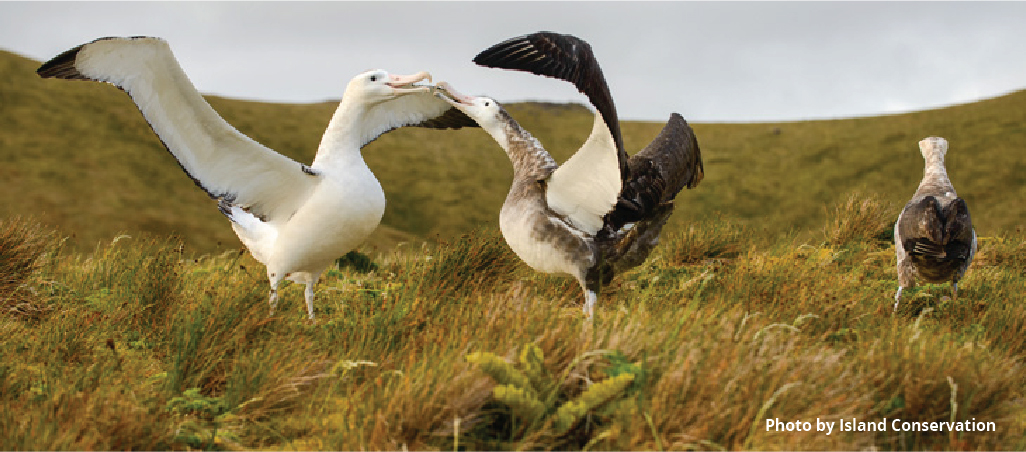On the occasion of the first phase of CBD COP 15 talks in Kunming this past October, world leaders gathered to continue discussions on a way forward to halt biodiversity loss and restore threatened ecosystems. To succeed, they will need to address what IPBES (The Intergovernmental Science-Policy Platform on Biodiversity and Ecosystem Services) has identified as the five main drivers of biodiversity loss, which include invasive alien species (IAS).
Nearly a fifth of the earth’s surface is at risk of plant and animal invasions, with islands the hardest hit by the impact of IAS. IAS are often introduced to an ecosystem through human activity. They can alter ecosystems and cause harm to human health, the economy, and native ecosystems in a variety of ways. On islands, these species represent the leading cause of extinction of native animals that have evolved without this source of competition or predation.

In the 19th century, for example, rodents were accidentally introduced to Gough Island, in the southern Atlantic ocean, putting several rare seabird species – including the Tristan albatross – at risk of extinction. Current eradication methods such as trapping or use of poison are limited in cost and scale and can have unintended effects on the ecosystem as non-targeted species may fall victim to them.
To address these challenges new tools are urgently needed. The use of gene drive approaches to control IAS is currently being investigated. Gene drives would work by introducing a gene into an invasive population which would make them either infertile or all one gender over successive generations. As David Will of Island Conservation explains in this article by The Guardian, “If a gene drive were proven to be effective […] you would introduce multiple individuals on an island whose genes would be inherited by other individuals in the population. Eventually, you would have either an entirely all male or entirely all female population and they would no longer be able to reproduce.”
If proven safe and effective, gene drives could work as a complementary tool to current interventions and help tackle the issue of invasive species in a more humane, scalable, and precise manner. According to Kent Redford, chair of the IUCN Task Force on Synthetic Biology and leader of an assessment on the use of synthetic biology in conservation, further research is needed to have a clear and informed debate on both the opportunities and risks of this novel potential approach. In his opinion, there is hope that gene drives have the potential to tackle the issue of invasive species alongside existing tools “with very limited knock-on effects on other species”. In this video, experts explain further how they think a gene drive approach could address the challenge of invasive alien species such as rats on islands.
Find out more about the five key drivers of biodiversity loss and what can be done to address them in this piece by The Guardian.
Recent posts
